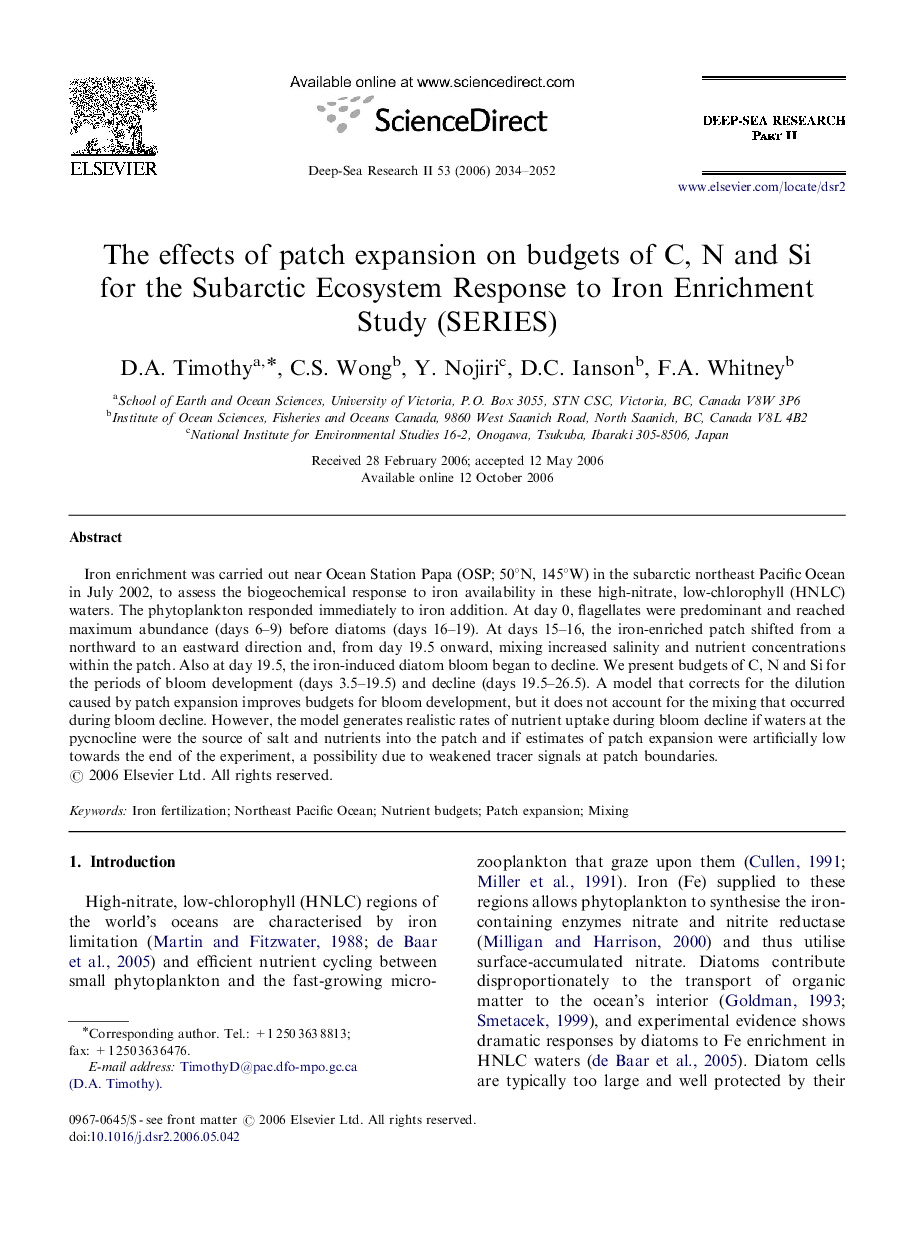| Article ID | Journal | Published Year | Pages | File Type |
|---|---|---|---|---|
| 4538346 | Deep Sea Research Part II: Topical Studies in Oceanography | 2006 | 19 Pages |
Iron enrichment was carried out near Ocean Station Papa (OSP; 50°N, 145°W) in the subarctic northeast Pacific Ocean in July 2002, to assess the biogeochemical response to iron availability in these high-nitrate, low-chlorophyll (HNLC) waters. The phytoplankton responded immediately to iron addition. At day 0, flagellates were predominant and reached maximum abundance (days 6–9) before diatoms (days 16–19). At days 15–16, the iron-enriched patch shifted from a northward to an eastward direction and, from day 19.5 onward, mixing increased salinity and nutrient concentrations within the patch. Also at day 19.5, the iron-induced diatom bloom began to decline. We present budgets of C, N and Si for the periods of bloom development (days 3.5–19.5) and decline (days 19.5–26.5). A model that corrects for the dilution caused by patch expansion improves budgets for bloom development, but it does not account for the mixing that occurred during bloom decline. However, the model generates realistic rates of nutrient uptake during bloom decline if waters at the pycnocline were the source of salt and nutrients into the patch and if estimates of patch expansion were artificially low towards the end of the experiment, a possibility due to weakened tracer signals at patch boundaries.
